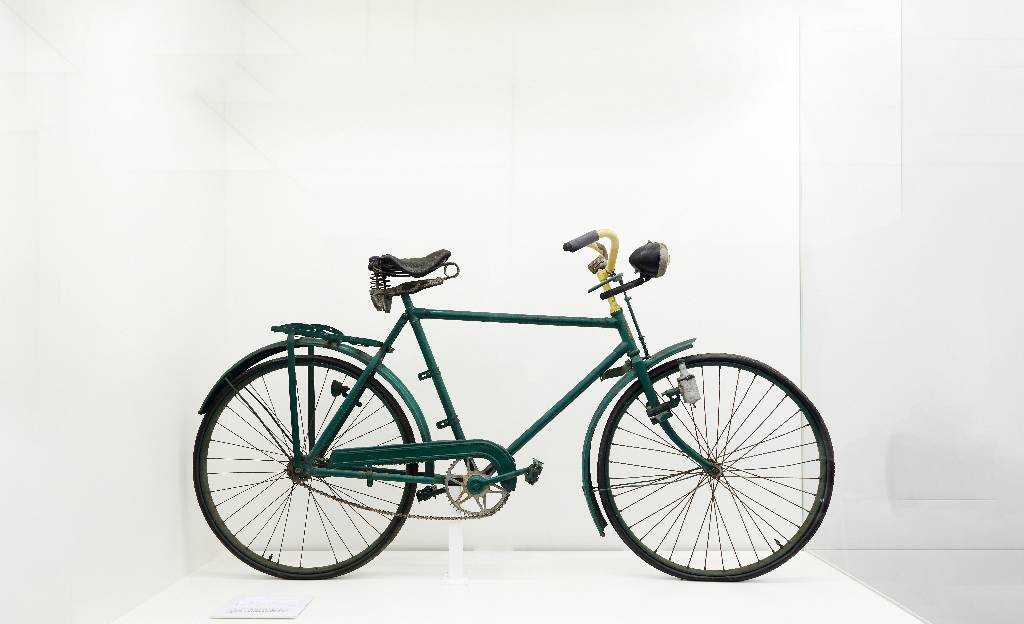Liberation, Objects!
52 exhibits tell the story of the Mauthausen and Gusen concentration camps and the subcamps 80 years after the liberation

The idea to launch an Austria-wide cooperation project between museums, archives, libraries, memorial institutions and the Mauthausen Memorial came about as a way of encouraging discussion in as many different and, above all, public places as possible, 80 years after the liberation.
Searching – Networking – Storytelling
Over the past few months, 52 institutions from all over Austria have sifted through their collections for artefacts, photographs, documents and plans relating to Mauthausen and proposed them for the project Liberation, Objects! (team: Ralf Lechner, Nathalie Soursos, Doris Warlitsch).
Exhibits from this cooperation will be presented throughout the year:
- in a virtual exhibition on the website of the Mauthausen Memorial,
- in a jointly created exhibition catalogue,
- through design elements in the display cases at the institutions and,
- in a social media campaign (#liberationobjects) and on postcards.
The exhibits proposed so far all have a connection to the concentration camps at Mauthausen and Gusen and the subcamps. They include books, written documents, photographs, works of art and other objects. Among the artefacts are a prisoner uniform, objects relating to forced labour for the firm Steyr-Daimler-Puch AG and at the tunnels in Melk-Roggendorf, and a Jewish survivor's Hanukkah menorah from Hohenems.
A project of the Collections of the Mauthausen Memorial in collaboration with Austrian museums, archives, libraries and memorial institutions.
In cooperation with

Participating Institutions
Architekturzentrum Wien, Archiv der Universität Wien, ARGE Schlier, Schloss Lind: das ANDERE heimatmuseum, DÖW – Dokumentationsarchiv des österreichischen Widerstandes, Feuerwehrmuseum der Stadt Wien, Gedenkdienstkomitee Gusen, Gedenkinitiative KZ-Außenlager St. Aegyd am Neuwalde (GISTA), Geschichtliches Museum der Stadt St. Valentin, Graz Museum (Stadtarchäologie Graz), Haus der Geschichte im Museum NÖ, Haus der Geschichte Österreich, Heimatmuseum Schloss Pragstein, Heimatmuseum St. Georgen, Jüdisches Museum der Stadt Wien, Jüdisches Museum Hohenems, Karden- und Heimatmuseum Katsdorf, Landesmuseum für Kärnten, Lern- und Gedenkort Schloss Hartheim, Literaturmuseum der ÖNB, mumok – Museum moderner Kunst Stiftung Ludwig Wien, Museum Arbeitswelt in Steyr, Museum Lauriacum Enns, Museum Moderner Kunst Kärnten, Naturhistorisches Museum, Nordico Stadtmuseum Linz, NS-Provenienzforschung / Universitätsbibliothek Wien, Österreichische Mediathek, Perspektive Mauthausen, QWIEN – Zentrum für queere Geschichte, SPD Salzweg, Stadtarchiv Innsbruck, Stadtarchiv und Kommunale Medienzentrale Passau, Stadtarchiv Steyr, Stadtmuseum Dornbirn, Stadtmuseum im Alten Rathaus Eisenerz, Stadtmuseum St. Pölten, SÜDBAHN Museum Mürzschlag, Theatermuseum, Tržiški muzej (Slowenien), Universität Wien – Institut für Urgeschichte und Historische Archäologie, Verein MERKwürdig – Zeithistorisches Zentrum Melk, VHS Hietzing, voestalpine Zeitgeschichte MUSEUM, Volkskundemuseum Wien, vorarlberg museum, Weltmuseum, Wiener Wiesenthal Institut für Holocaust Studien, Wien Museum, Wiener Stadt- und Landesarchiv, Zeitgeschichte Museum und KZ-Gedenkstätte Ebensee.
The project is funded by the Federal Ministry for Arts, Culture, Civil Service and Sport.
